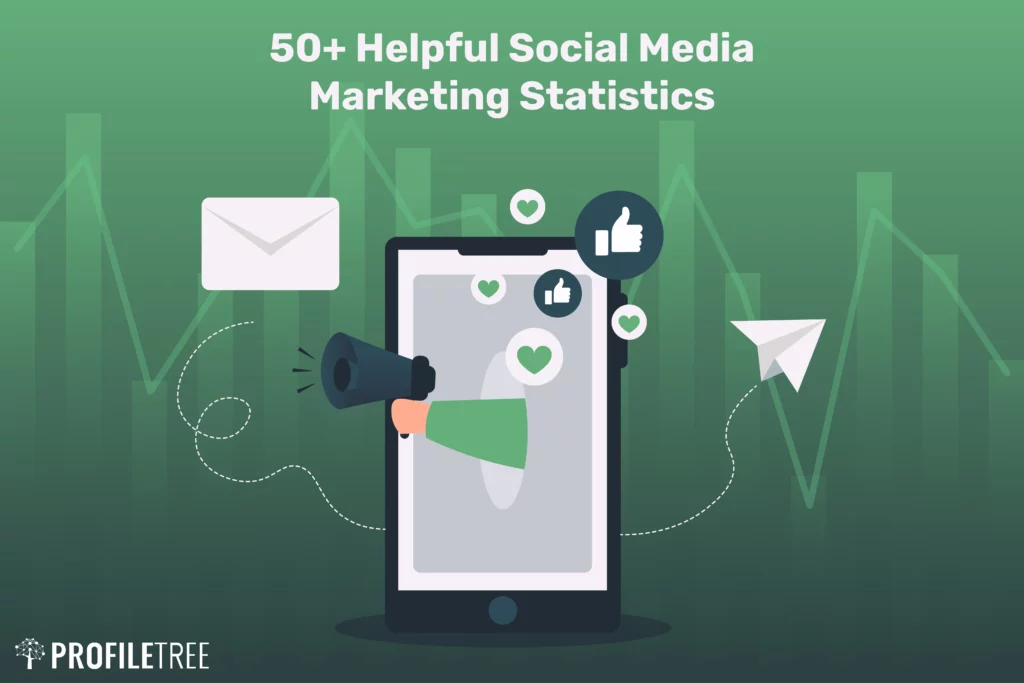In today’s interconnected world, social media platforms have become ubiquitous, transforming how we communicate, share information, and even consume news. Understanding the intricate tapestry woven by social media platforms user statistics is no longer just a marketing necessity but a crucial step towards navigating the complexities of online interaction.
This article delves into the fascinating realm of social media platforms user statistics, unveiling the ever-growing number of users, the most popular platforms, and the diverse demographics of this vibrant online community. By exploring these statistics, we gain valuable insights into how individuals engage with social media, its potential impact on individuals and society, and the ever-evolving trends shaping this dynamic landscape. Through this exploration, we equip ourselves with the knowledge to navigate the opportunities and challenges presented by the ever-changing world of social media.
Global Social Media Usage: A Numbers Game
The social media platforms user statistics paint a captivating picture of a world increasingly connected through online platforms. As of January 2024, a staggering 5.04 billion people actively use social media worldwide, representing 62.3% of the global population. This translates to a significant 8% growth compared to the previous year, with an additional 266 million users joining the social media landscape. This growth trajectory shows no signs of slowing down, indicating a potential future where social media becomes even more deeply embedded in our daily lives.
Additionally, it’s essential to consider social media platforms user statistics. On average, individuals spend a significant amount of time engaging with these platforms, dedicating approximately 2 hours and 23 minutes daily to social media activities. This emphasises these platforms’ profound influence on our daily routines, with roughly 1/10th of our waking hours consumed by content consumption, interactions, and online persona crafting. Thus, comprehending the demographics and trends within these statistics is imperative as we navigate social media’s intricate and constantly changing landscape.
It’s worth noting that these global statistics mask regional variations in social media penetration. While some regions boast significantly higher adoption rates, others lag due to factors like access to technology, internet infrastructure, and cultural norms. Exploring these regional variations provides valuable insights into the diverse landscape of social media usage worldwide.
Top Social Media Platforms by User Base: A Battle for Dominance

Within the expansive domain of social media, specific platforms reign supreme, attracting billions of users and shaping online interactions. Let’s explore the top social media platforms by user base, delving into the number of active users and the fierce competition for dominance, as revealed by social media platforms user statistics.
Facebook:
Facebook is the undisputed king of social media, with an astonishing 3.05 billion monthly active users (MAUs). This translates to a staggering one of every three people on Earth actively engaging with Facebook monthly. Its longevity, diverse features, and established user base solidify its position globally as the most widely used platform.
According to social media platforms ‘ user statistics, the messaging giant WhatsApp is hot on Facebook’s heels, boasting 2.78 billion MAUs. Its emphasis on private communication and seamless integration with Facebook has propelled it to become an essential tool for everyday interactions, information sharing, and business communication. WhatsApp’s user base continues to grow steadily, showcasing its vital role in connecting individuals across borders.
YouTube:
The video-sharing behemoth YouTube commands the attention of 2.49 billion MAUs, as revealed by social media platforms user statistics. Its vast content library, encompassing everything from entertainment and music to educational tutorials and documentaries, caters to various interests and demographics. YouTube’s unique ability to entertain, inform, and educate simultaneously has firmly cemented its position as a leading platform for online engagement.
As indicated by social media platforms user statistics, Instagram‘s visually-driven platform captures the imagination of 2.04 billion MAUs, primarily attracting younger demographics with its focus on photo and video sharing. Its user-friendly interface, diverse filters, and emphasis on visual storytelling have fueled its popularity, establishing it as a prominent platform for personal expression, brand marketing, and influencer campaigns.
A unique case study, WeChat dominates primarily in China, boasting 1.32 billion MAUs, as revealed by social media platforms user statistics. This multi-purpose platform transcends the boundaries of traditional social media, encompassing messaging, social media, mobile payments, and even online shopping. WeChat’s integration into daily life for many users in China highlights the potential of social media platforms to evolve beyond simply connecting individuals and become ingrained in various aspects of everyday life.
These statistics paint a vivid picture of these platforms’ immense popularity and ability to connect individuals across the globe. However, the landscape constantly shifts, with new platforms emerging and established ones vying for user attention. Staying informed about these social media platforms user statistics is crucial for understanding the ever-evolving dynamics of online interaction and effectively navigating the complex world of social media.
Demographic Breakdown of Users: Social Media Platforms User Statistics

While the social media platforms user statistics paint a broad picture of global reach, understanding the demographics of these users provides deeper insights into who is driving this digital phenomenon. Let’s explore the fascinating breakdown of users across different age groups:
Millennials (born 1981-1996)
Reigning supreme as the most active social media demographic, 68.8% of Millennials actively engage with these platforms in 2024, according to social media platforms user statistics. Their digital fluency and comfort with online interaction have fueled their participation across various platforms, making them a crucial target audience for many businesses and social movements.
Gen Z (born 1997-2012)
Following closely behind are the digitally native Gen Z users, with an impressive 64.1% actively engaging with social media, according to social media platforms user statistics. This generation spends significant time online, utilising social media for entertainment, communication, self-expression, and activism. Interestingly, Gen Z also tops the charts in daily social media usage, with a staggering 35% spending more than two hours daily on these platforms, highlighting their deep integration with the online world.
Gen X (born 1965-1980)
Traditionally perceived as less tech-savvy, Gen X users are defying expectations, with 55.7% actively participating in social media, as revealed by social media platforms user statistics. This significant increase showcases their growing comfort level with online platforms and the potential for social media to connect them with family, friends, and even former colleagues, fostering a sense of community and belonging.
Baby Boomers (born 1946-1964)
While lagging behind younger generations, 42.3% of Baby Boomers are now active social media users, according to social media platforms user statistics. This remarkable growth signifies their increasing familiarity with online platforms and their potential for staying connected with loved ones, discovering new interests, and engaging in online communities focused on shared experiences or hobbies.
It’s crucial to remember that these statistics represent general trends and may vary depending on the specific platform, geographical location, and cultural context. Gender, income level, education, and ethnicity influence social media usage patterns.
Analysing these demographic breakdowns allows for a more nuanced understanding of the diverse user base that shapes the social media landscape, as indicated by social media platforms user statistics. This knowledge empowers businesses to develop targeted marketing strategies and content creation tailored to specific audiences, ensuring their messages resonate with the right individuals and communities.
Furthermore, understanding the demographics of social media users is essential for researchers and policymakers seeking to address potential challenges associated with online interactions, such as misinformation, cyberbullying, and echo chambers. By delving deeper into the demographic breakdown of users, we gain valuable insights into the intricate ecosystem of social media and its multifaceted impacts on individuals and society as a whole.
Regional Variations in Usage: A Global Landscape with Local Nuances

The social media platforms user statistics paint a global picture, but regional variations reveal fascinating nuances in platform popularity and user behavior. Let’s focus on the United Kingdom as a specific example, where we can delve deeper into the dynamics of social media usage.
Overall Penetration
In the UK, according to social media platforms user statistics, 62 million individuals actively engage with social media as of January 2024, translating to an impressive 68% of the population. This widespread adoption highlights the deep integration of social media platforms into daily life for individuals across the UK.
Top Platforms
As social media platform user statistics indicate, the UK landscape presents a unique picture compared to global trends. While WhatsApp reigns supreme with 45.8 million monthly active users, its dominance stems from its focus on private messaging and seamless integration with other platforms like Facebook Messenger. Interestingly, Facebook remains highly relevant in the UK, with 40.3 million users, showcasing its continued popularity despite a potential decline in other regions. This highlights the influence of local preferences and cultural contexts on platform adoption.
Demographic Trends
Mirroring global trends, according to social media platforms user statistics, younger generations in the UK are the most active social media users. Millennials and Gen Z account for the highest proportion of active users, with 68.8% and 64.1%, respectively, demonstrating their digital fluency and comfort with online interaction. However, it’s noteworthy that 42.1% of Baby Boomers in the UK also actively engage with social media, indicating a significant and growing adoption across all age groups. This trend challenges traditional perceptions of technology adoption and highlights the potential of social media to connect individuals across generations.
Regional Differences
While social media usage is widespread across the UK, as indicated by social media platforms user statistics, some regional variations exist. Urban areas tend to boast higher penetration rates compared to rural areas, potentially due to better access to technology and internet infrastructure. Additionally, cultural factors and local preferences can influence platform popularity in specific regions. For example, platforms catering to niche interests or communities might enjoy more incredible popularity in certain areas than others.
Understanding these regional variations in usage is crucial for various stakeholders. Businesses in the UK market can leverage this knowledge to tailor their social media strategies to specific regions and demographics, ensuring their messages resonate with the right audiences and maximise their reach. Policymakers and educators can also benefit from these insights by developing targeted initiatives and educational programs that address potential opportunities and challenges associated with social media usage in different regions.
It’s important to remember that the provided statistics offer a snapshot of the current landscape and may evolve. Staying informed about these social media platforms, user statistics, and regional variations is essential for navigating the ever-changing dynamics of online interaction and making informed decisions in a globalised world. By continuously monitoring and analysing these statistics, we gain valuable insights into the complex and evolving social media ecosystem, enabling us to harness its potential for positive social impact and mitigate potential risks.
Conclusion: Unveiling the Power and Nuances of Social Media

The social media platforms user statistics paint a captivating picture of a world interconnected through online platforms. With billions actively engaging daily, social media has become an undeniable force shaping communication, information consumption, and online identities. Understanding the diverse user base, platform popularity, and regional variations within these statistics is crucial for navigating the complexities of this ever-evolving landscape.
The dominance of established platforms like Facebook and WhatsApp showcases their ability to connect individuals across borders and cater to diverse needs. However, the emergence of new platforms and the growing adoption among older generations highlight the dynamic nature of the social media landscape. Recognising these trends allows individuals, businesses, and policymakers to adapt their strategies and approaches to maximise the potential of social media for positive impact.
While social media platforms user statistics provide valuable insights, it’s crucial to acknowledge their limitations. These statistics represent snapshots of a constantly evolving landscape, and deeper analysis is often needed to understand the complex motivations and behaviours behind user engagement. Additionally, ethical considerations surrounding data collection, privacy concerns, and the potential for misinformation dissemination necessitate ongoing conversations and responsible practices.
Staying informed about social media platforms user statistics and engaging in critical discourse around their implications will be essential as we progress. By harnessing the power of these platforms for connection, communication, and information sharing while addressing potential challenges, we can create a more inclusive and positive online environment for all.


